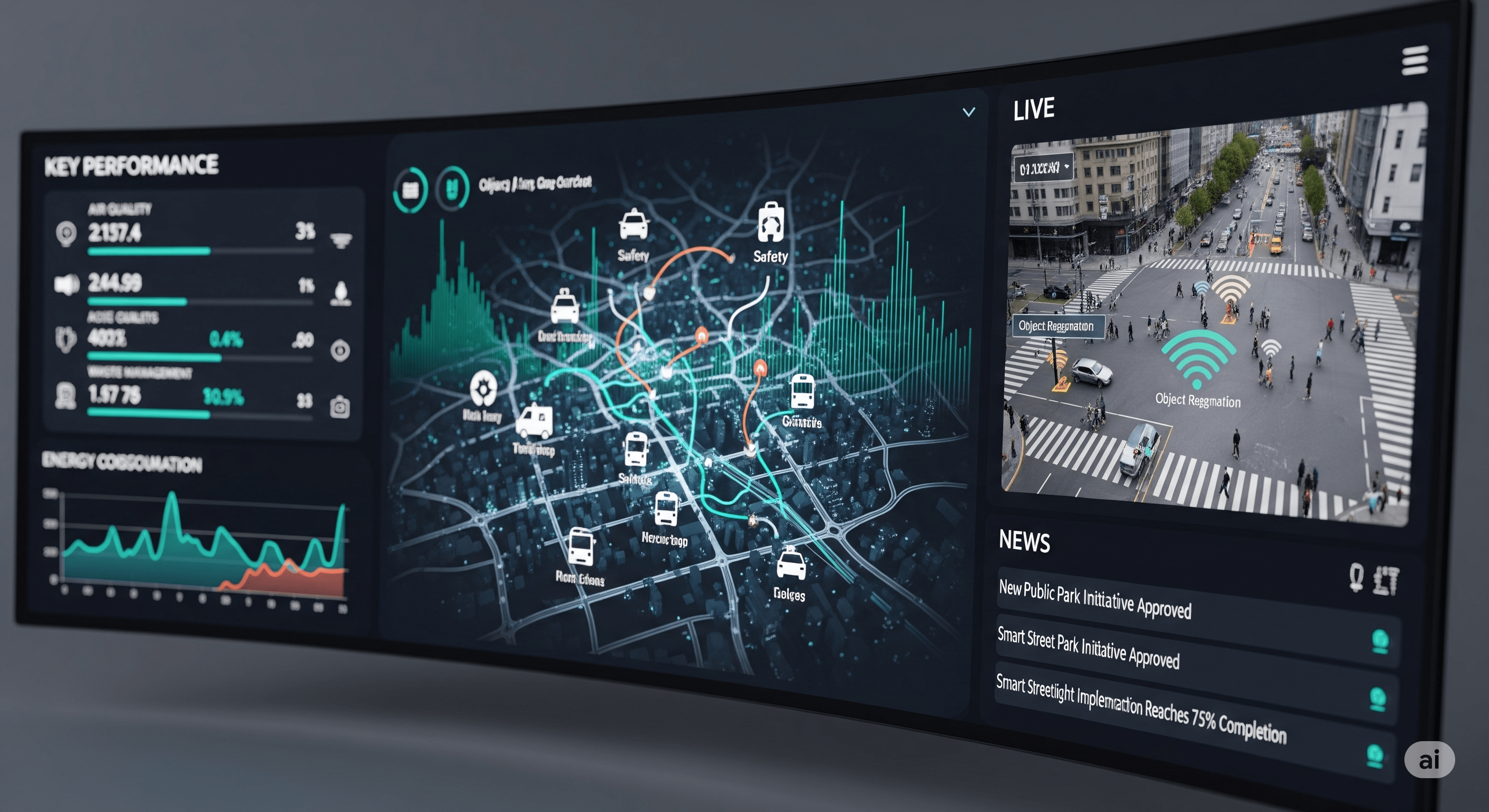Case Study: Smart City Applications
May 21, 2024
Smart city initiatives leverage IoT technology to improve the efficiency and quality of urban services. From waste management to public lighting, real-time data allows city operators to allocate resources more effectively, reduce costs, and create a better environment for citizens. ioCtrlMQ can serve as a powerful, centralized dashboard for monitoring this diverse infrastructure.

The Challenge
A municipal public works department wants to optimize two key services: waste collection and streetlight maintenance. They are wasting fuel by sending garbage trucks to empty bins and are slow to respond to streetlight outages, which are typically reported by citizens. They need a system to monitor both assets in real-time.
The Solution with ioCtrlMQ
The city deploys two types of IoT sensors that communicate over a LoRaWAN network (a long-range, low-power network ideal for cities), which then forwards data to an MQTT broker:
- Ultrasonic Bin Sensors: Placed inside public waste bins, these sensors measure the distance to the top of the trash, determining how full the bin is. They report the fill-level percentage to topics like
city/waste/bin-101/fill_level. - Smart Streetlight Controllers: Existing streetlights are retrofitted with controllers that can detect lamp failures (by monitoring current) and report their status. A 'fault' status is published to a topic like
city/lighting/lamp-A42/status.
A central ioCtrlMQ dashboard is set up for the operations center:
- Map Location Widget: This is the primary view. The Map Location widget displays the location of every waste bin. The markers are color-coded based on data from a transformation script: green for bins less than 75% full, and red for bins that are 75% full or more and require collection. Clicking a marker shows the exact fill percentage. A separate layer on the map shows streetlight locations, with a red icon for any light reporting a 'fault' status.
- Bar Chart: A Bar Chart widget provides a summary, showing the total number of bins in each state (e.g., 'OK', 'Full'), giving a quick overview of the collection needs.
- Table Widget: A Table widget subscribes to
city/lighting/+/statusand is configured to only show messages with a 'fault' payload. This creates an automatically-updating list of broken streetlights that need servicing. - Text Display: A Text Display widget shows the total number of reported streetlight faults, serving as a key indicator for the maintenance team's workload.
The Outcome
The city's services are transformed. The sanitation department replaces fixed collection routes with dynamic ones generated daily based on the dashboard map, servicing only the full bins. This results in a 30% reduction in fuel consumption and vehicle mileage. The maintenance team no longer waits for citizen complaints; the dashboard provides an instant, live list of streetlight faults, allowing them to dispatch crews proactively. This improves repair times and enhances public safety.